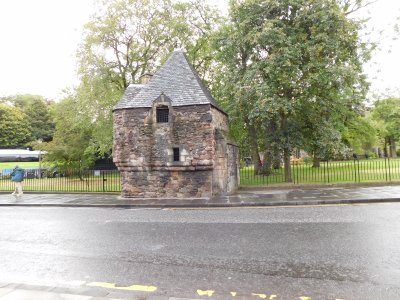
Queen Mary's Bath House |
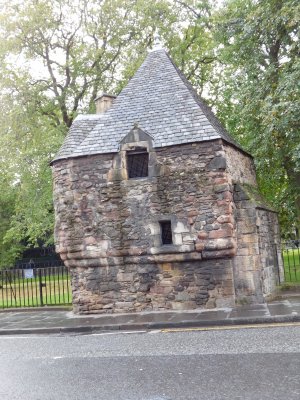
Queen Mary's Bath House |
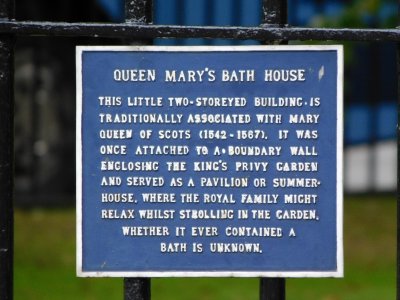
Queen Mary's Bath House |
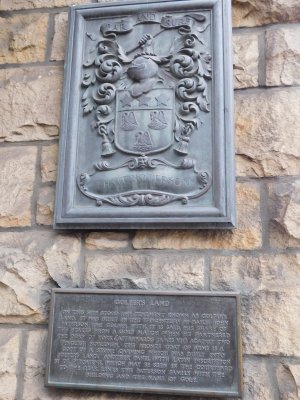
Golfers Land building |
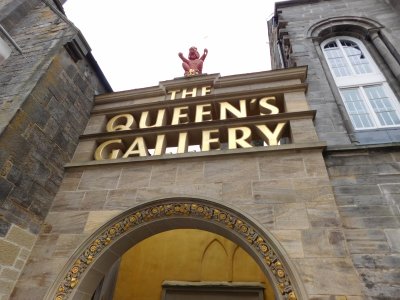
The Queen's Gallery, Palace of Holyroodhouse |
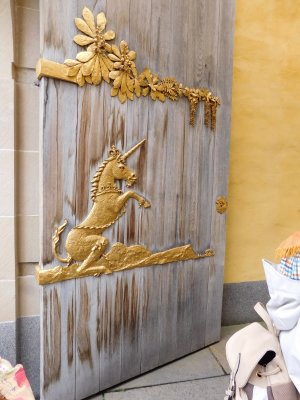
The Queen's Gallery-The British coat of arms depicts a unicorn (Scotland) and a lion (England) flanking a shield |
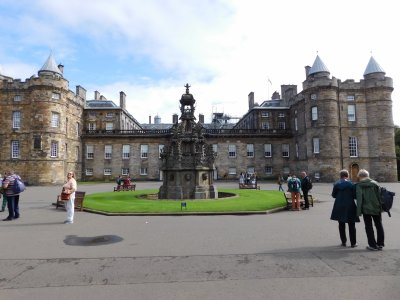
Palace of Holyroodhouse-16th century north-west tower(left), the rest dates from the 17th century, except the Victorian fountain |
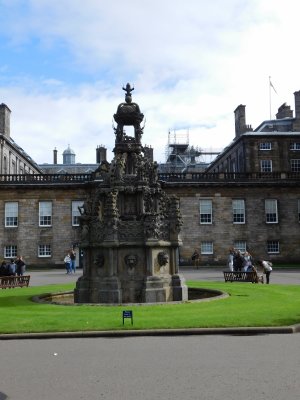
Palace of Holyroodhouse- AKA Holyrood Palace, is the official residence of the British monarch in Scotland, Queen Elizabeth II |
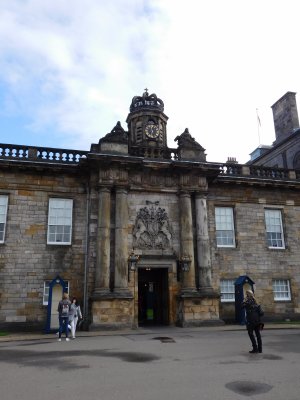
Holyrood Palace-Queen Elizabeth spends one week in residence at Holyrood Palace at the beginning of each summer |
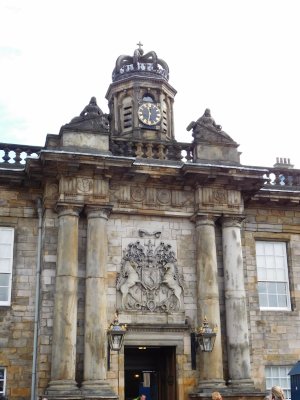
The entry gateway framed by coupled Roman Doric columns, the carved Royal Arms of Scotland & octagonal cupola with clock-face |
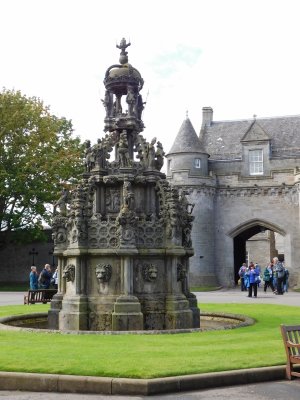
Forecourt fountain- a 19th-century replica of the 16th-century fountain at Linlithgow Palace |
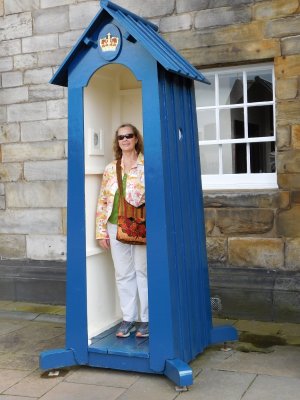
Palace of Holyroodhouse- Guard house fun! |
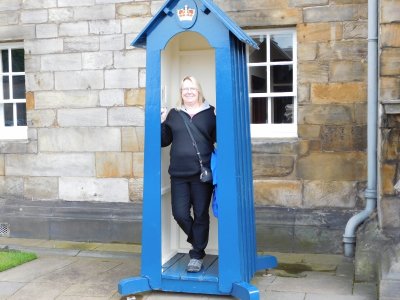
Palace of Holyroodhouse- Guard house fun! |
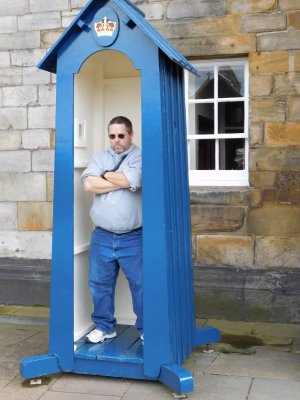
Palace of Holyroodhouse- Guard house fun! |
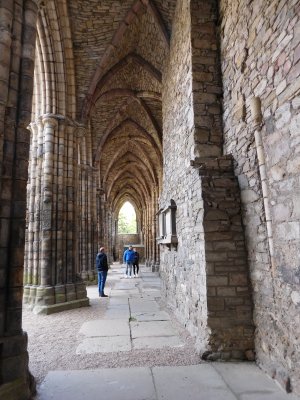
Holyrood Abbey- a ruined abbey of the Canons Regular in Edinburgh, Scotland. The abbey was founded in 1128 by King David I |
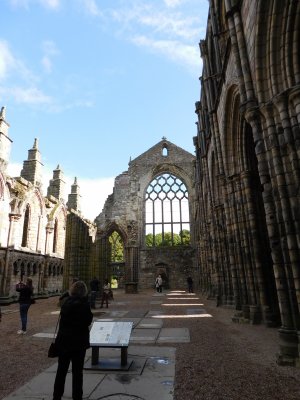
Holyrood Abbey- During the 15th century, the abbey guesthouse was developed into a royal residence, |
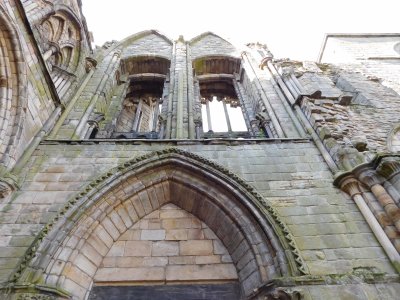
Holyrood Abbey- and after the Scottish Reformation the Palace of Holyroodhouse was expanded further |
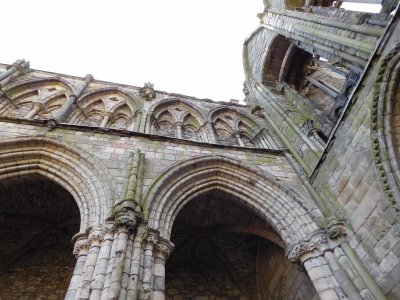
Holyrood Abbey- was used as a parish church until the 17th century, and has been ruined since the 18th century |
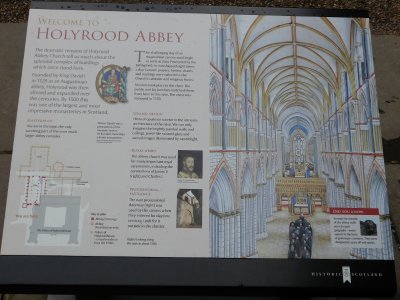
Holyrood Abbey info |
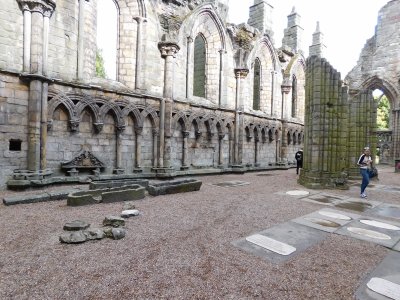
Holyrood Abbey-Legend relates that in 1127, King David I was hunting in the forests of Edinburgh during the Feast of the Cross |
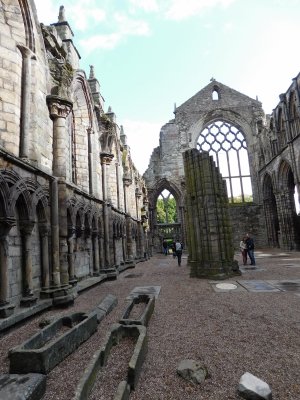
Holyrood Abbey-he was thrown from his horse after it had been startled by a hart (stag) |

Holyrood Abbey-According to variations of the story, the king was saved from being gored by the charging animal |
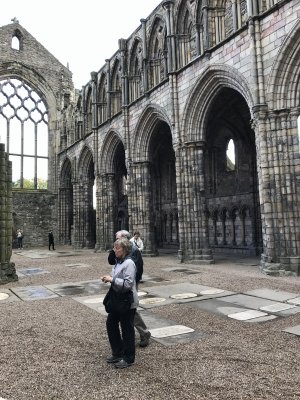
Holyrood Abbey-when it was startled either by the miraculous appearance of a holy cross descending from the skies |
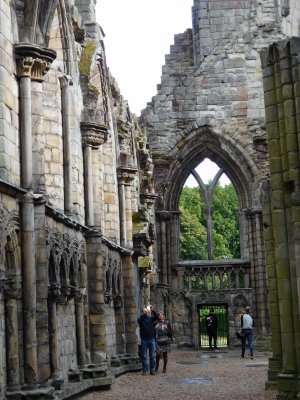
Holyrood Abbey-or by sunlight reflected from a crucifix which suddenly appeared between the hart's antlers |

Holyrood Abbey-while the king attempted to grasp them in self-defence |
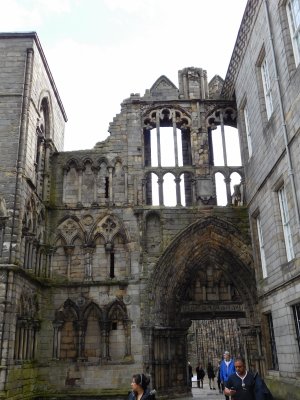
Holyrood Abbey-As an act of thanksgiving for his escape, David I founded Holyrood Abbey on the site in 1128 |
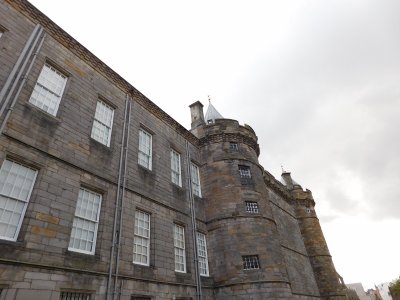
Palace of Holyroodhouse |
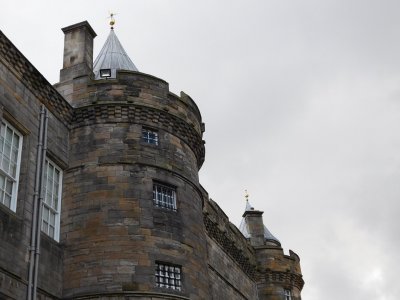
Palace of Holyroodhouse |

Holyrood Abbey |
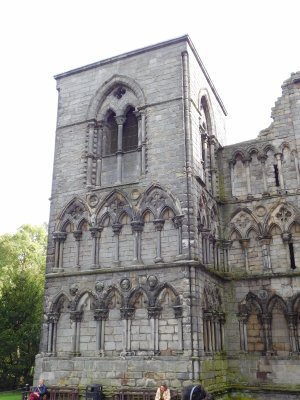
Holyrood Abbey |
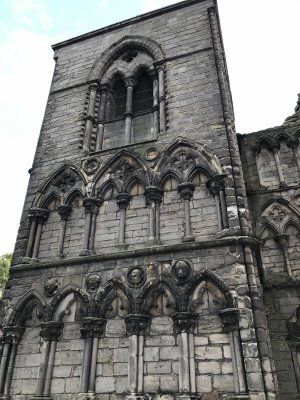
Holyrood Abbey |
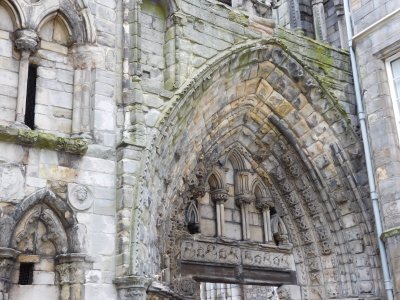
Holyrood Abbey |
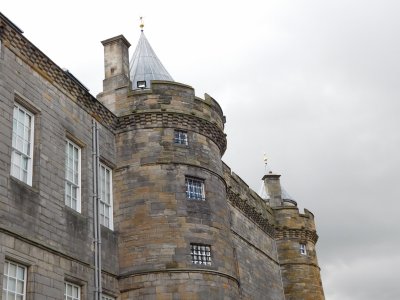
Palace of Holyroodhouse |
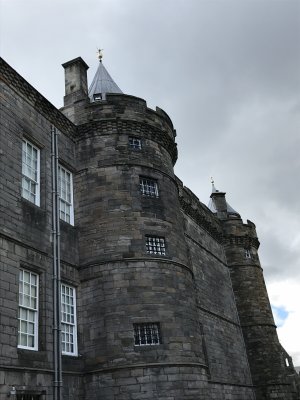
Palace of Holyroodhouse |
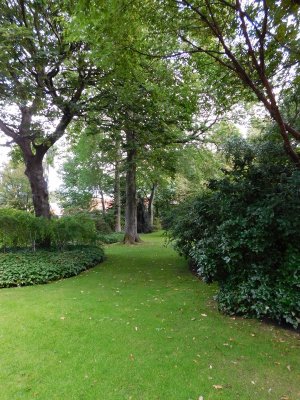
Holyroodhouse Gardens extend to some 10 acres, set within the much larger Holyrood Park. |
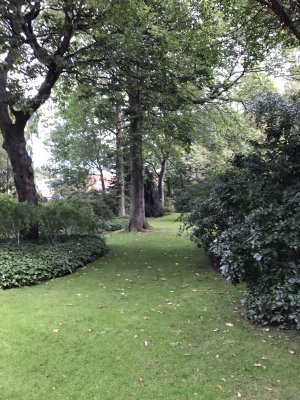
Holyroodhouse Gardens |

Holyroodhouse Gardens |
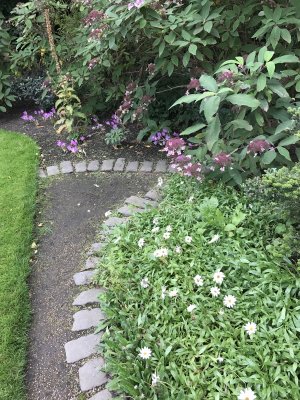
Holyroodhouse Gardens |

Palace of Holyroodhouse |
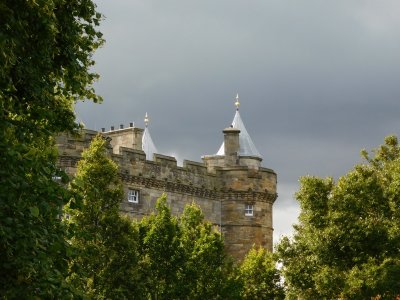
Palace of Holyroodhouse |

Holyrood Abbey |
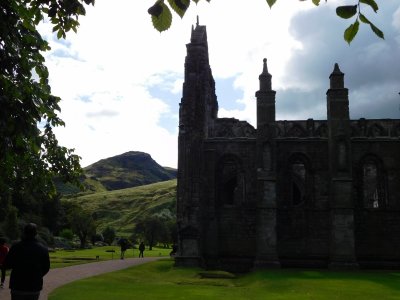
Holyrood Abbey |

Holyrood Abbey |
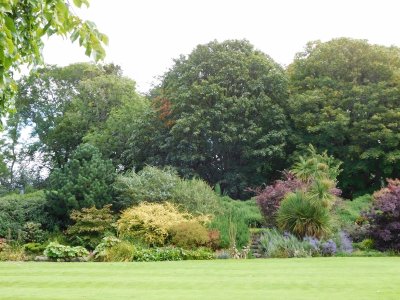
Holyroodhouse Gardens |
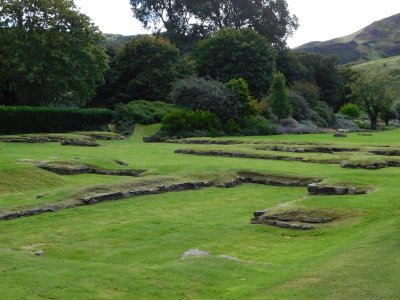
Holyrood Palace-was excavated in 2006 as part of a special edition of Channel 4's archaeology series "Big Royal Dig" |
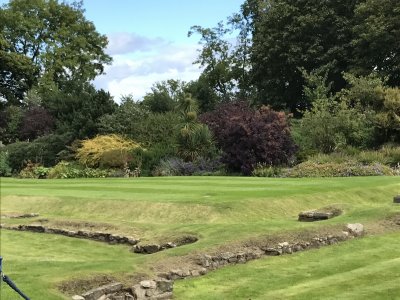
The archaeologists uncovered part of the cloister of Holyrood Abbey, running in line with the existing abbey ruins |
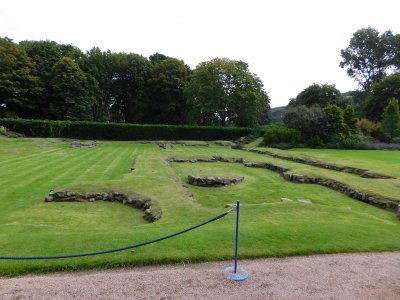
and a square tower associated with the 15th-century building works of James IV was discovered |
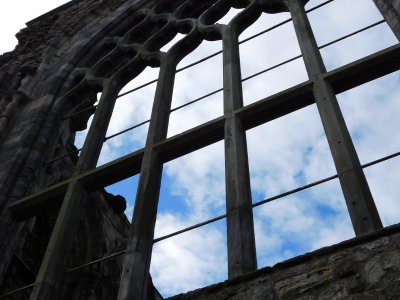
Holyrood Abbey- Visited by Felix Mendelssohn in July 1829, then served as inspiration for his Scottish Symphony |

Holyroodhouse Park/ Arthur's Seat Peak as seen from behind the Palace |
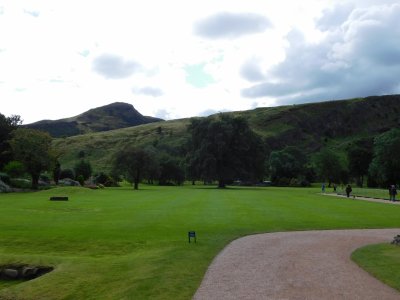
Holyroodhouse Park/ Arthur's Seat Peak as seen from behind the Palace |
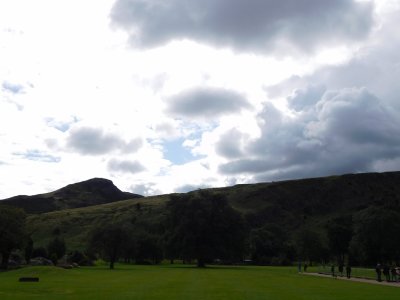
Holyroodhouse Park/ Arthur's Seat Peak as seen from behind the Palace |
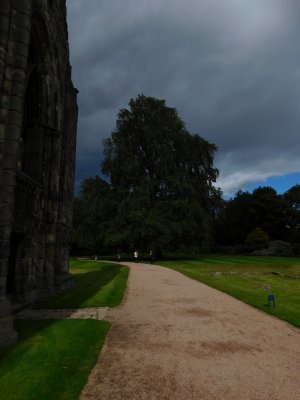
Palace of Holyroodhouse |

Palace of Holyroodhouse |
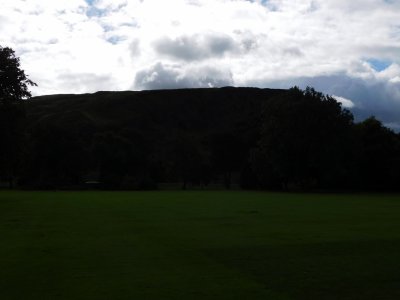
Holyroodhouse Park/ Arthur's Seat Peak as seen from behind the Palace |
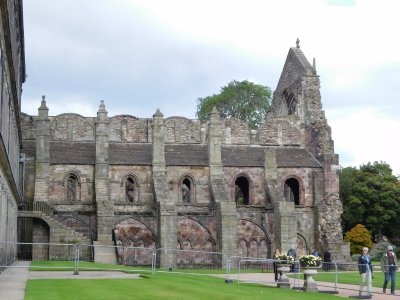
Palace of Holyroodhouse |
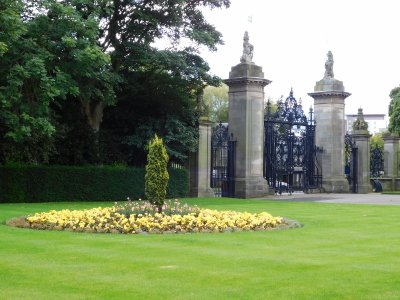
Palace of Holyroodhouse |
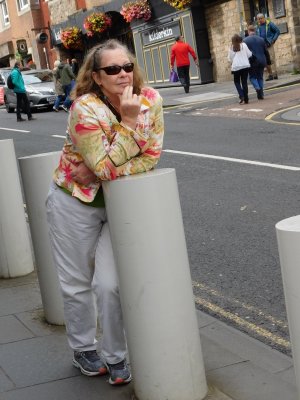
Waiting for the bus |
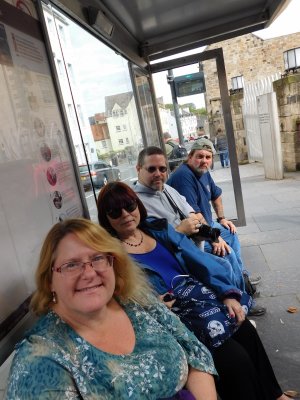
Waiting for the bus |
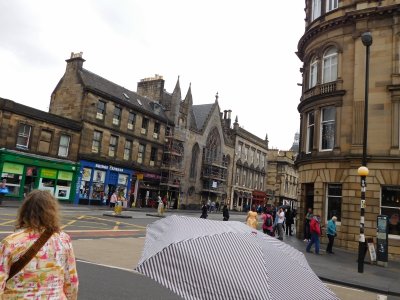
Frankenstein Bar |
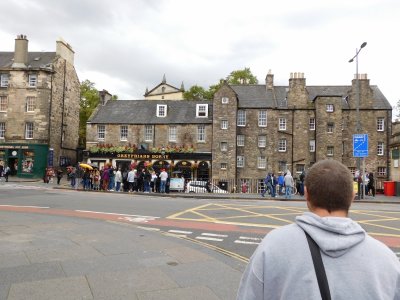
Greyfriars Bobby (May 4, 1855 Ė January 14, 1872) was a Skye Terrier |
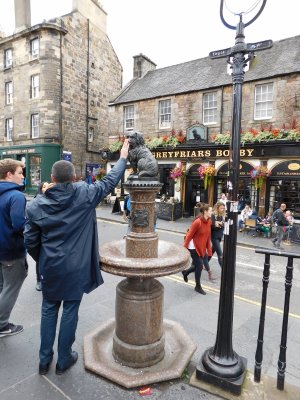
Greyfriars Bobby became known in 19th-century Edinburgh for spending 14 years guarding the grave of his owner until he died |
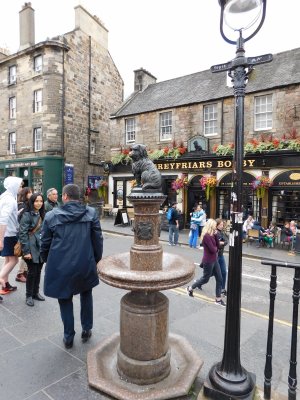
Greyfriars Bobby was buried just inside the gate of Greyfriars Kirkyard, not far from John Gray's (his owner) grave |
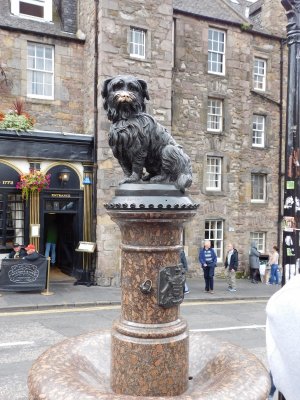
Greyfriars Bobby- tour guides started false rumours that it was a 'tradition' to rub the nose for luck |
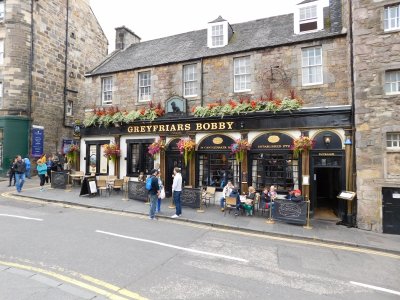
Greyfriars Bobby's Bar- good rest stop! |
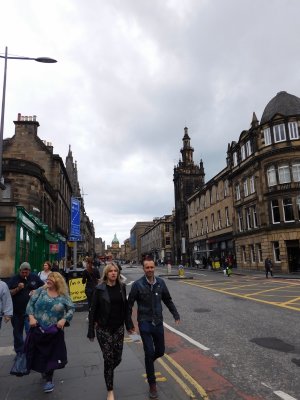
A look up the street to the green dome of the Museum on the Mound |
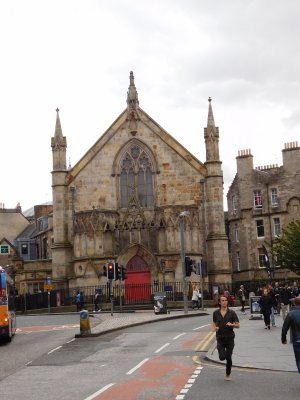
Bedlam Theatre- a 90-seat student theatre in former church, showcasing new writing, revivals, cabaret and workshops. |
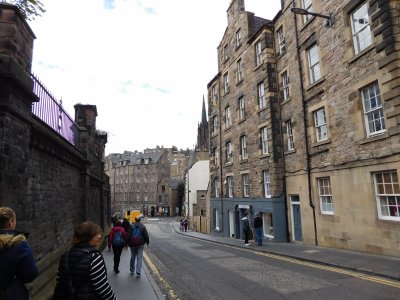
Candlemaker Row heading down to Grassmarket Square |

Cool unknown old building with The Hub's spire in the background |

Grassmarket Square- Awesome market |
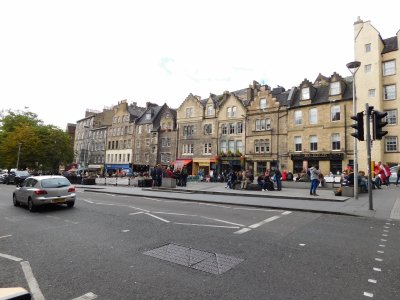
Grassmarket Square |
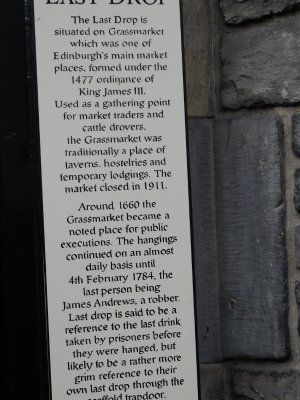
The Last Drop-located in the spot that was once one of the city's main gallows...Last Drop from the noose, not the Coffee spoon! |
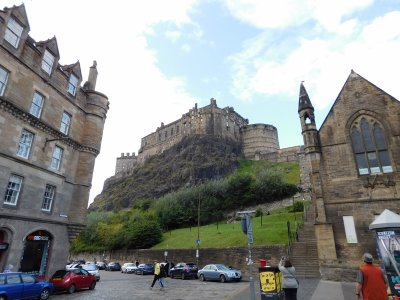
View of Edinburgh Castle from King's Stables Road in Grassmarket Square |
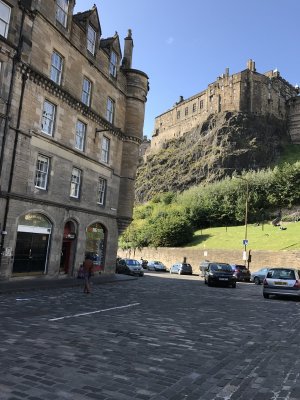
View of Edinburgh Castle from King's Stables Road in Grassmarket Square |
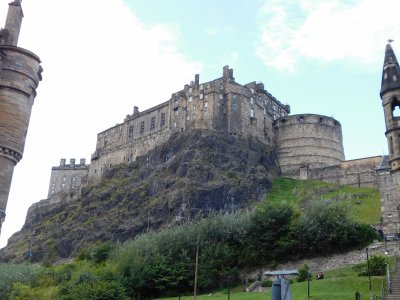
View of Edinburgh Castle from King's Stables Road in Grassmarket Square |
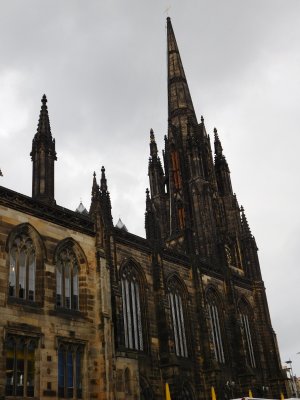
Built as the Victoria Hall(1842) to house the General Assembly of the Church of Scotland was never consecrated as a Church |
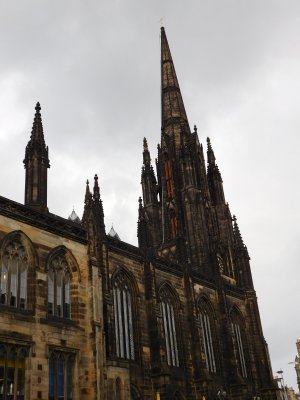
In 1929 the Church of Scotland ceased to use the building and it became a temporary home for a variety of congregations. |
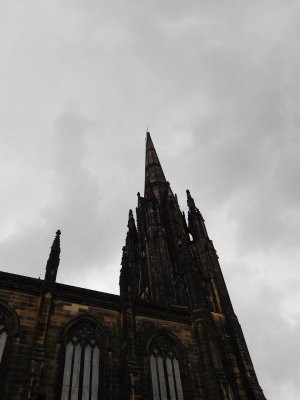
It was named the Highland Tolbooth St Johnís Church(Tollbooth Kirk) in 1956, before falling into disuse in the 1980s. |
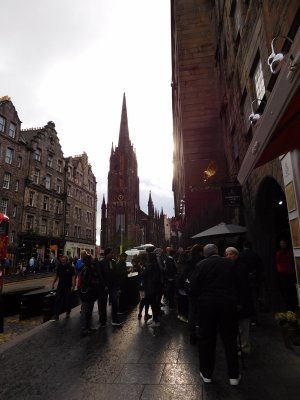
In 1999, the building underwent a transformation to create offices & performance space for the Edinburgh International Festival |
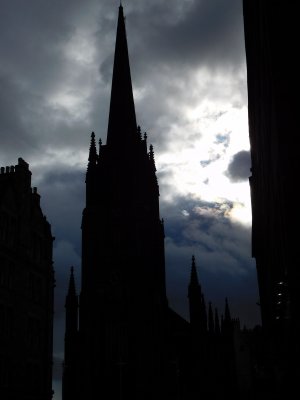
The Hub- now a unique and flexible venue, yet it also holds its place within the architectural fabric of Edinburgh |
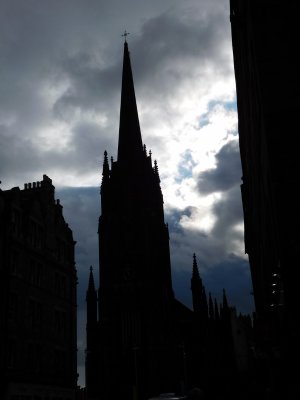
The Hubís spire is the highest point in central Edinburgh. |
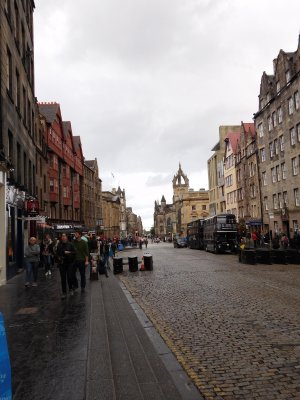
View down the Royal Mile to St Giles Cathedral(1124) founded by King David I |
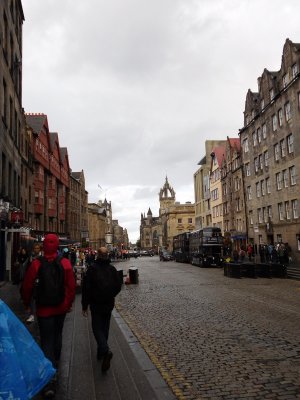
St Gilesí was built on the very eastern edge of Edinburgh and pre-dates most of the Old Town. |
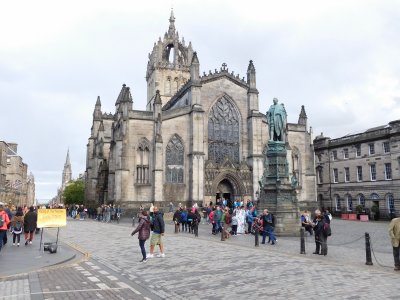
David I later founded the Abbey of Holyrood & gave the abbot permission to build houses up the ridge towards St Gilesí |
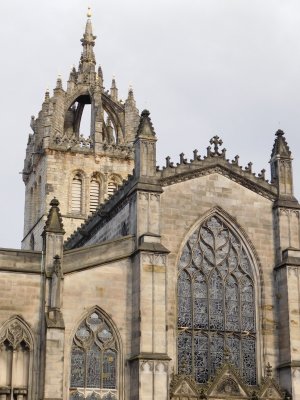
Establishing the Canongate burgh and forming what is now known as the Royal Mile |
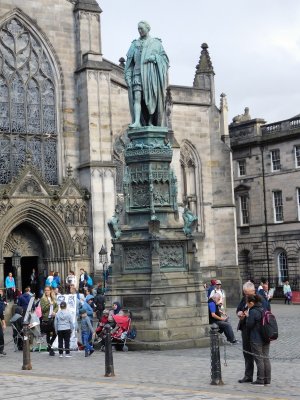
John Knox was a Scottish priest who converted to Protestantism in the 1540s and fled into hiding and exile. |
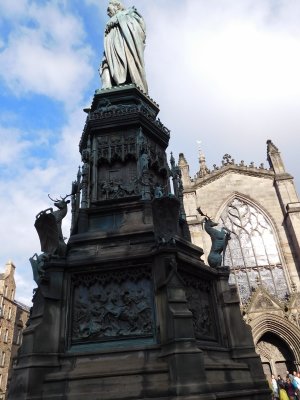
In Geneva he befriended the French reformer John Calvin. |
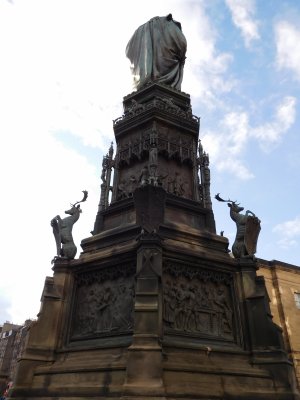
On his return to Scotland he marched an army of followers into St Gilesí and preached there for the first time |
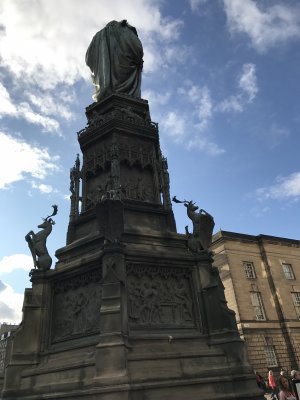
The following week(1559) he was elected its minister and the building was stripped of its Catholic decoration |
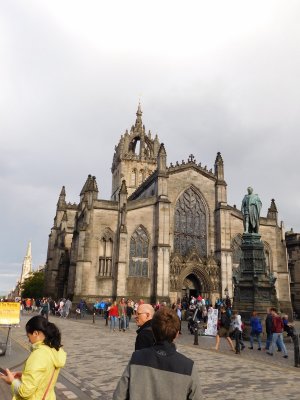
The Scottish Parliament abolished papal authority in 1560 and decreed that Scotland was now a Protestant country. |
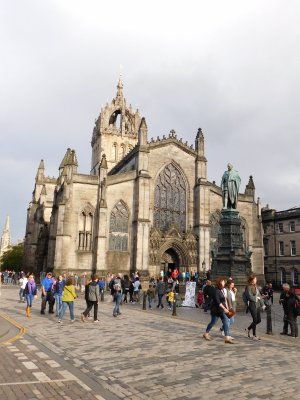
Despite Scotland still having a Catholic queen, Mary Queen of Scots. St Gilesí 400 years as a Catholic church came to an end |
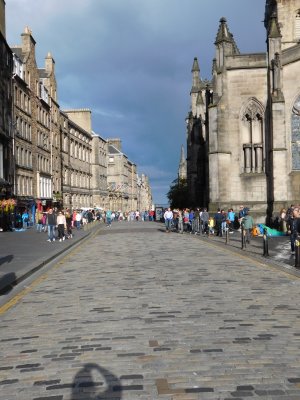
1637 King Charles I attempted to draw the Presbyterian Scottish church into line with the Anglican English church |
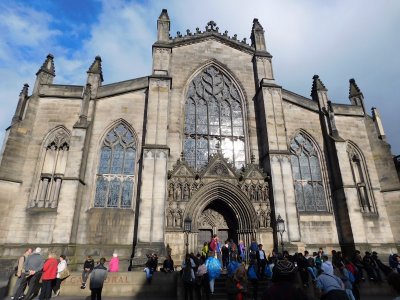
Scottish opposition came to the boil when Charles I attempted to impose a new prayer book in St Gilesí |
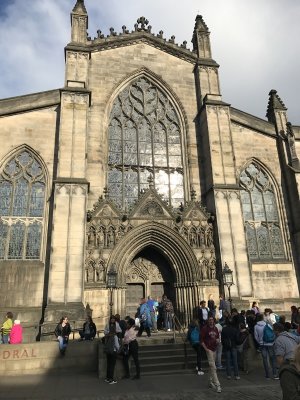
A local woman picked up her stool and threw it at the preacher, starting a riot. Church services were suspended for a week |
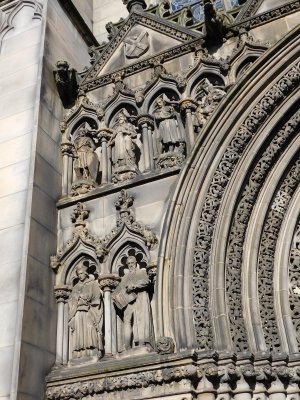
1872 the Lord Provost of Edinburgh William Chambers revitalised and refurbished church |
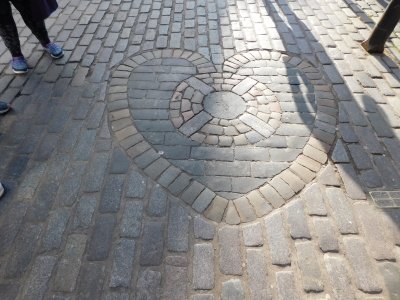
Heart of Midlothian Mosaic- built into the pavement to mark the Old Tolbooth, a prison and site of many public executions |
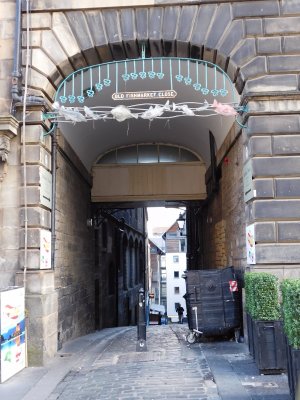
Small alleyways leading off the main street usually named after a memorable occupant or a trade common to the area |
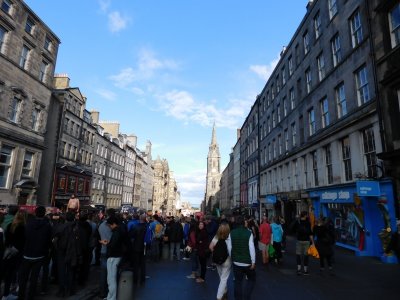
View down the Royal Mile to Tron Kirk & Royal Mile Market |
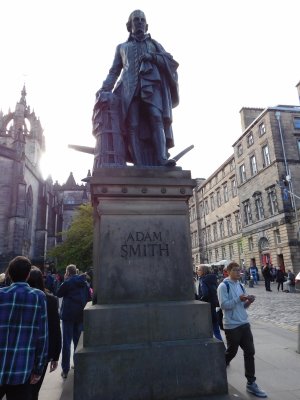
A Scottish economist, philosopher, author, moral philosopher, pioneer of political economy- known as ''The Father of Capitalism" |
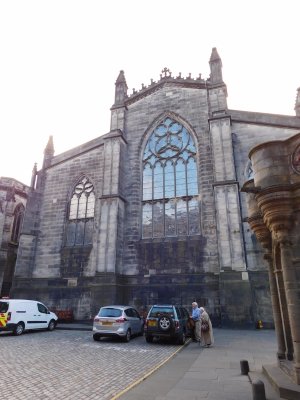
St Giles' Cathedral |
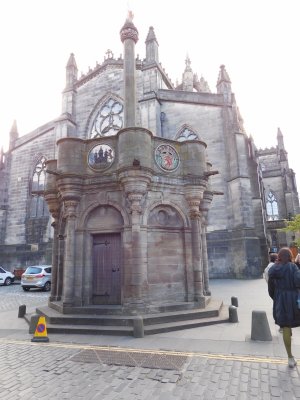
The Mercat Cross on Edinburgh's Royal Mile. An 1885 replacement of the original cross removed in 1756. |
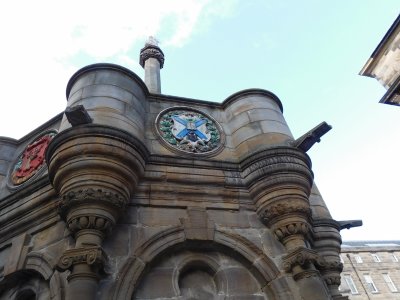
Mercat Cross is the Scots name for the market cross found frequently in Scottish cities, towns and villages |
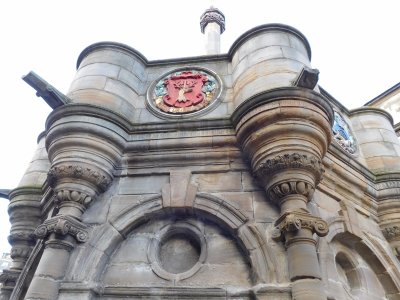
Mercat Cross where historically the right to hold a regular market or fair was granted by the monarch, a bishop or a baron |
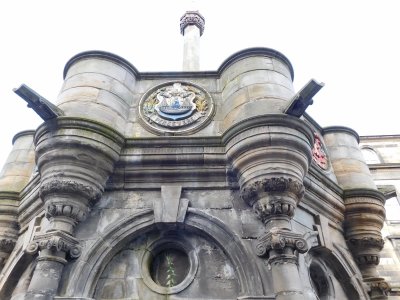
Mercat Cross- The cross was the place around which market stalls would be arranged, and where merchants would gather |
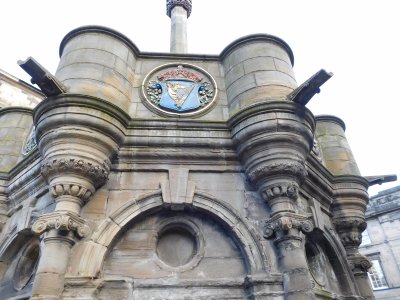
Mercat Cross-It was also the spot where state and civic proclamations would be publicly read by the "bellman" (town crier) |
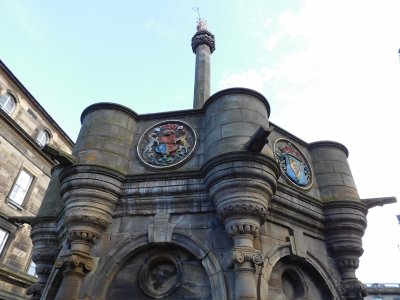
Mercat Cross-To this day, royal proclamations are still ceremonially read in public at the Mercat Cross in Edinburgh |
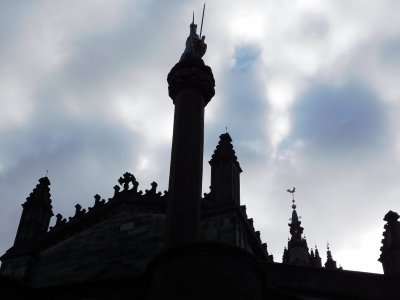
Skyline of St Giles's gothic medieval building |
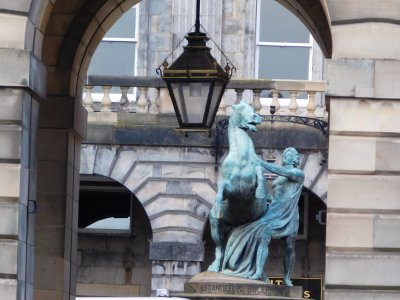
Bronze statue of Alexander the Great taming his horse, Bucephalus located in front of Edinburgh's City Chambers |











